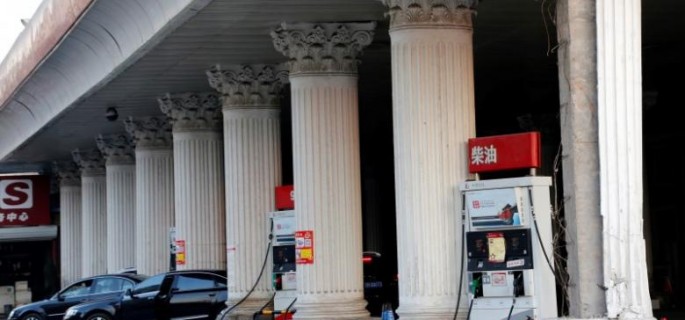Oil prices rebound on weaker dollar, supportive China manufacturing data

Oil prices rose in Asian trade on Thursday as the U.S. dollar weakened, rebounding from a more than 3 percent drop in the previous session following surprisingly large builds in U.S. crude and distillate stockpiles last week.
An unexpected boost in China’s manufacturing sector also lent support to oil prices after official data on Thursday showed a modest gain in manufacturing activity in August.
“The weaker dollar is providing support for oil prices today,” said Jonathan Barratt, chief investment officer at Sydney’s Ayers Alliance.
The dollar wavered against the yen and the euro on Thursday, its recent gains stalling before Friday’s non-farm payroll report in the United States. A weaker dollar makes greenback-denominated commodities, including oil, cheaper for holders of other currencies.
Brent crude futures had climbed 27 cents to $47.16 a barrel as of 0522 GMT (0122 ET) after settling $1.33 lower, or 2.8 percent, at the previous close.
U.S. crude futures rose 25 cents to $44.95 a barrel, after falling $1.65, or 3.6 percent, in the previous session.
That came after U.S. crude inventories rose 2.3 million barrels to 525.9 million barrels in the week to Aug. 26, data from the Department of Energy’s Energy Information Administration showed on Wednesday. That compared with analyst expectations of a 921,000-barrel increase.
Distillate stocks, which include diesel and heating oil, unexpectedly rose by 1.5 million barrels, while gasoline inventories fell by 691,000 barrels, about half the forecast drawdown. <EIA/S>
“There’s been a little bit of a rally after yesterday’s session. But it’s not enough of a turnaround to give any potential insight whether the rally is going to continue later in the session when London and New York open,” said Ric Spooner, chief market analyst at Sydney’s CMC Markets.
Spooner also said the market took comfort from Chinese manufacturing data which showed activity held steady or saw a modest gain in August.
The official Purchasing Managers’ Index (PMI) rose to 50.4 in August, compared with the previous month’s reading of 49.9, data on Thursday showed. The private Caixin/Markit Manufacturing PMI slipped to 50.0, the no-change mark, down from 50.6 in July.
Speculation the Organization of the Petroleum Exporting Countries and other oil producers might agree to curb output at talks in Algeria later this month helped fuel an 11 percent rise in crude prices in August, the best monthly return since April.
But optimism of an output freeze has since waned.
“The market doesn’t believe OPEC has the ability to achieve an agreement freezing supply,” Barratt added.
Source: Reuters





























